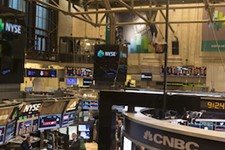 Following a month when there were no above-normal trading days despite high levels of market volatility, 401(k) traders seemingly decided to change course in May.
Following a month when there were no above-normal trading days despite high levels of market volatility, 401(k) traders seemingly decided to change course in May.
According to Alight’s May 2022 401(k) Index, 12 of 21 days in May had above-normal 401(k) trading activity, but no day exceeded three times the daily average. In comparison, there were 16 above-normal days in the first four months of the year.
The Index, which tracks the 401(k)-trading activity of over 2 million people with more than $200 billion in collective assets, also found that all but three days (18 out of 21) in the month saw net trading activity moving money from equities to fixed income. The year-to-date totals show that 75 out of 103 trading days have favored fixed income over equity.
In addition, net transfers in May were up compared to April, rising to 0.22% as a percentage of starting balance, up from 0.10%, bringing the year-to-date total to 0.70%. An average of 0.018% of 401(k) balances were traded daily in May.
“With volatility in the equity markets, 401(k) investors were active but cautious traders,” Alight observes in the Index.
The firm considers a “normal” level of relative transfer activity is when the net daily movement of participants’ balances as a percent of total 401(k) balances within the Index equals between 0.3 times and 1.5 times the average daily net activity of the preceding 12 months. A “high” relative transfer activity day is when the net daily movement exceeds two times the average daily net activity.
Inflows and Outflows
Trading inflows for May went mainly to stable value, money market and self-directed window funds, while outflows were primarily from target date, large U.S. equity and bond funds.
As for the overall percentage and value, stable value funds received 85% of trading inflows for an index value of $442 million. Following stable value were money market funds at 12% for an index value of $60 million and self-directed window funds at 3% or $16 million.
Target date funds saw the most trading outflows in May at 42% for an index value of $216 million, followed by large U.S. equity funds (23% at $121 million) and bond funds (14% at $73 million).
Asset classes with most contributions in May included TDFs, at 30% for an index value of $548 million, followed by large U.S. equity funds at 21% (or $241 million) and international equity funds at 7% (or $82 million).
After reflecting market movements and trading activity, average asset allocation in equities decreased from 69.1% in April to 68.8% in May. New contributions to equities decreased from 69.5% in April to 69% in May.
Market Performance
And while the market returns for the common indices showed very modest gains in May, they were still in negative territory for the year. U.S. bonds (represented by the represented by the Bloomberg U.S. Aggregate Bond Index) were up 0.6% for May, but down -8.9% for the year; U.S. large equity (represented by the S&P 500 Index) was 0.2%, but down 12.8% for the year; U.S. small equity (represented by the Russell 2000 Index) was 0.2% but down -16.6%; and international equity (represented by the MSCI All Country World ex-U.S. Index) was 0.7%, but down 10.7% for the year.
- Log in to post comments
